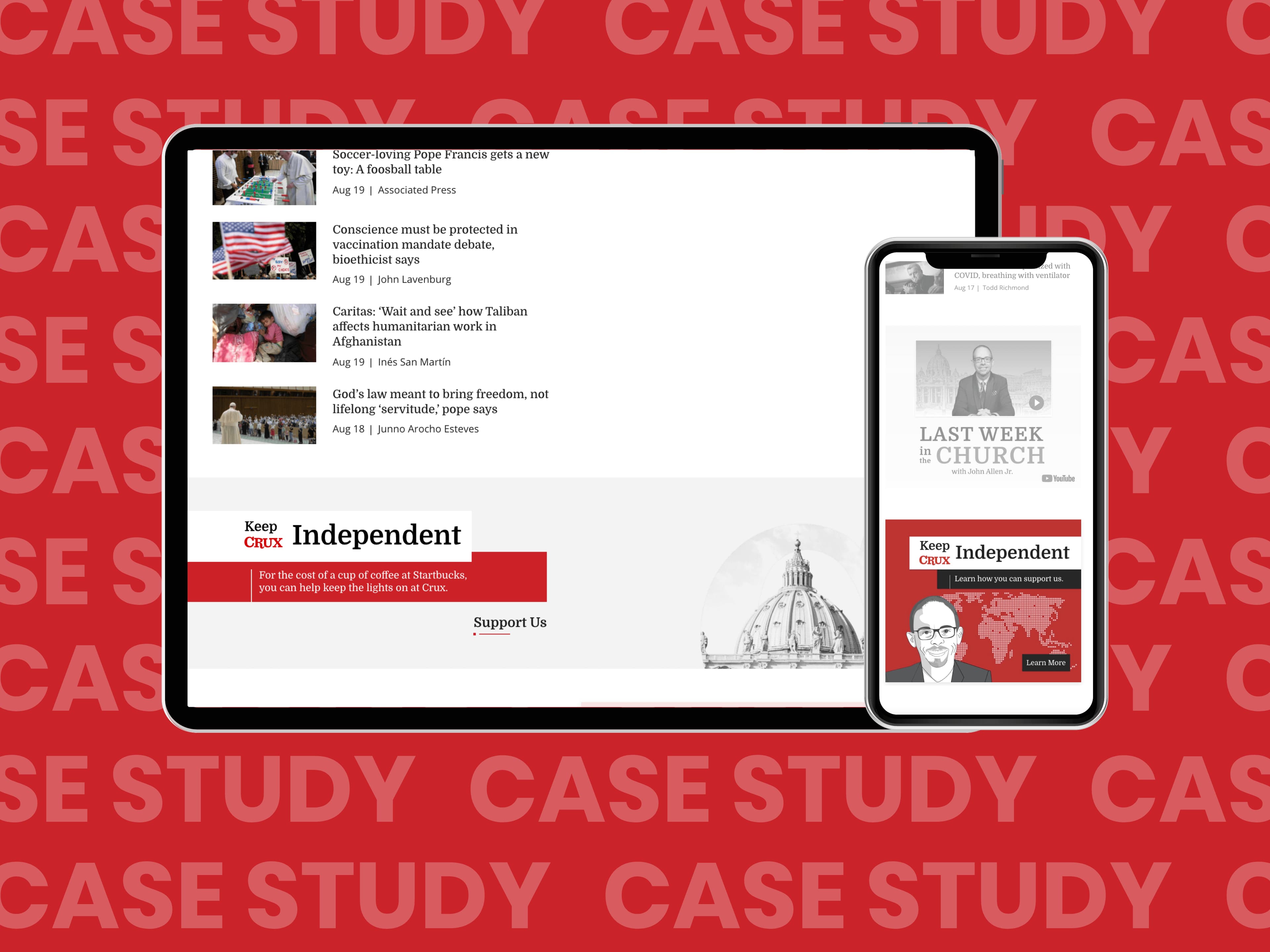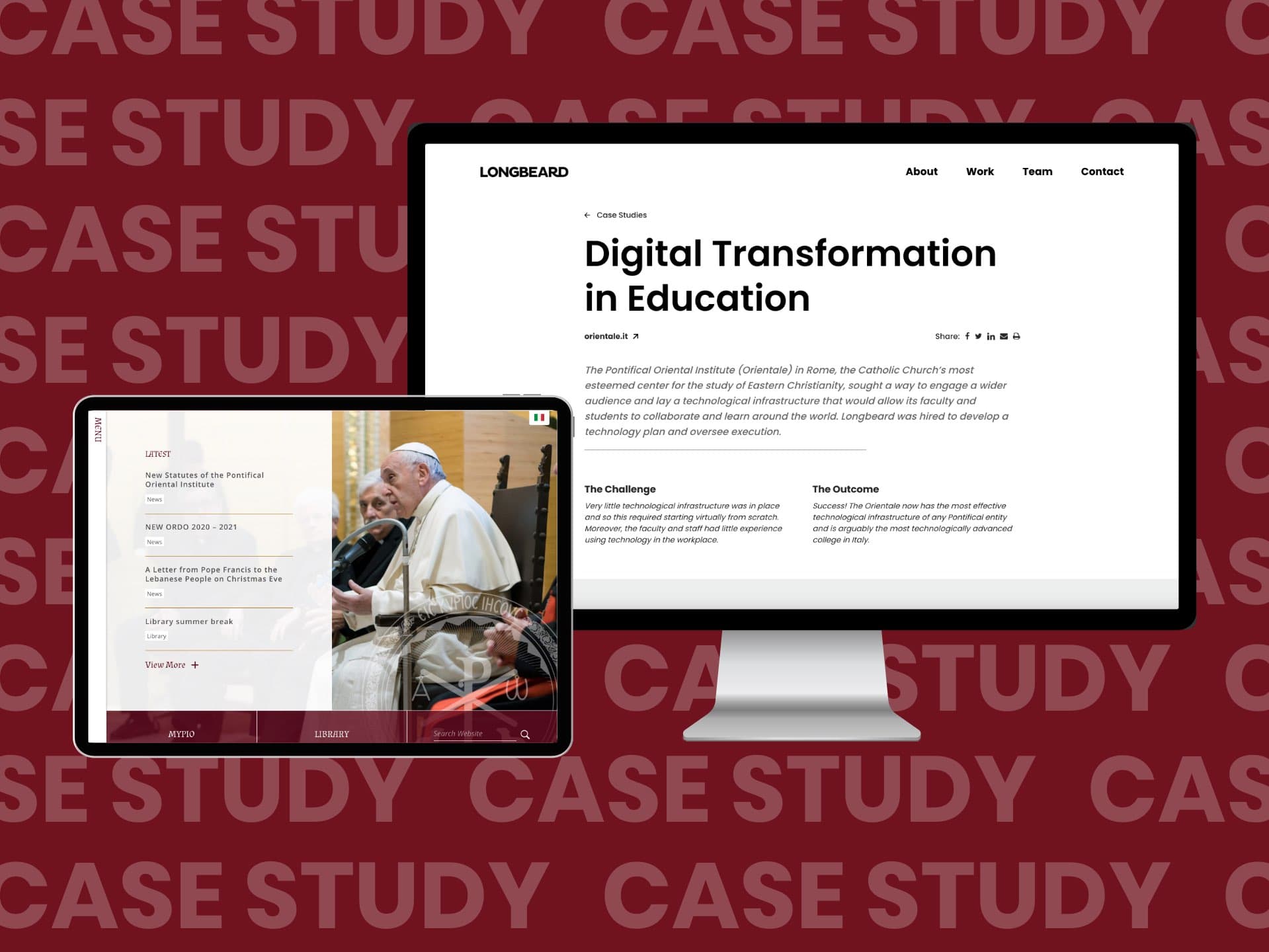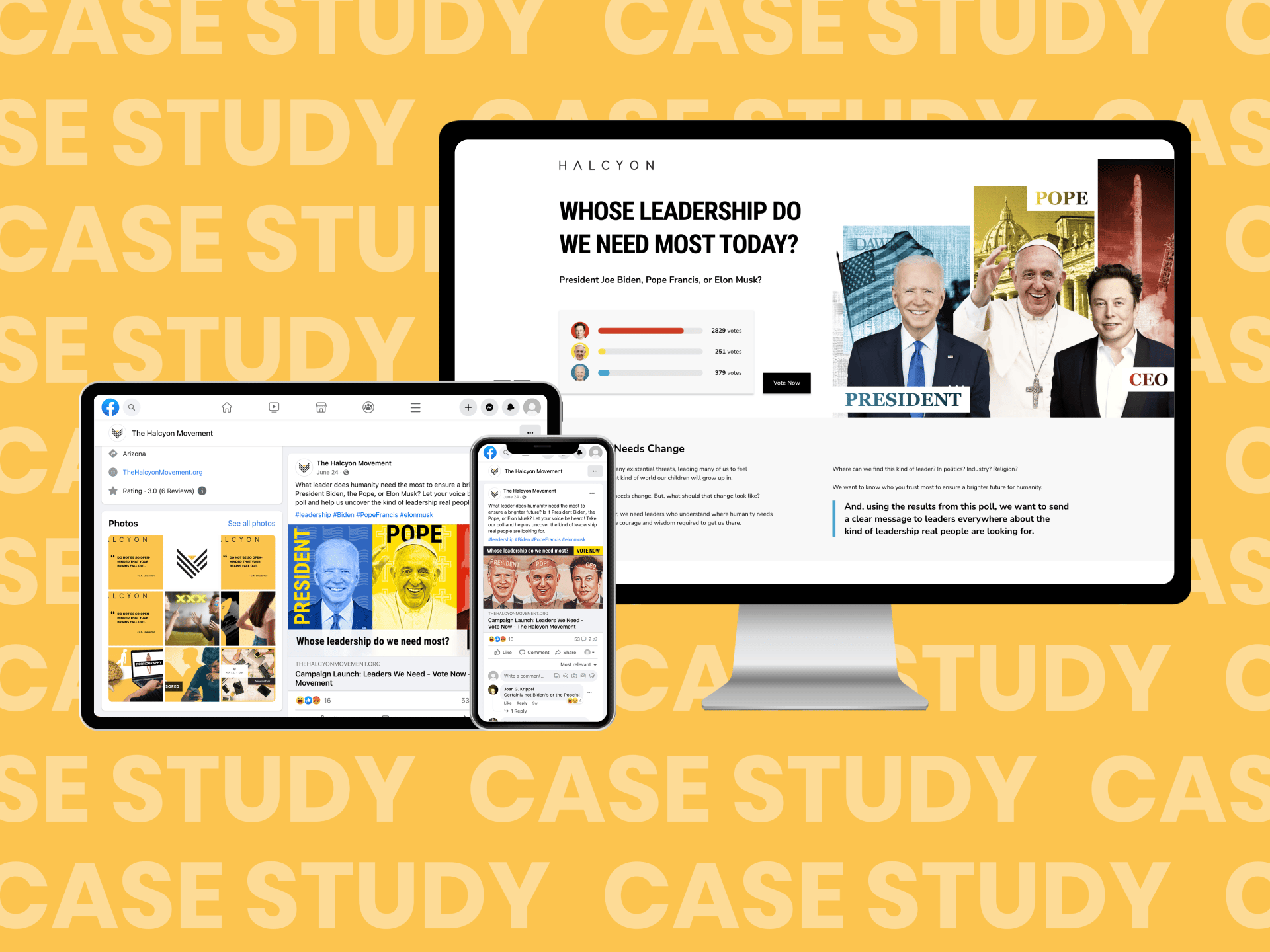Digital Transformation at the Vatican
The Pope has a special place in his heart for migrants and refugees. This is likely the reason why he decided to create a new section at the Dicastery for Promoting Integral Human Development (IHD) that he would personally oversee to ensure the Holy See was doing everything it could to support these people. The Pope wanted results and so Longbeard was engaged by the section’s leadership to help pilot a new technical infrastructure to facilitate their global mission.
The Challenge
We had to start from scratch and train a new team on technologies they had never worked on before.
The Outcome
Success! The Migrants and Refugees Section effectively adopted a new technology stack that was brand new at the Vatican and revolutionized their capabilities. Moreover, they simultaneously launched a new website and social accounts that were widely celebrated.
The Objective
Execute a digital transformation at the section that will enable it to more effectively leverage technology to advance its impact mission of supporting migrants and refugees.
The Challenges
- Connectivity. Initial internet infrastructure at the Vatican was not prioritized for VOIP and had bandwidth issues.
- Applications. A new application stack was required that would permit collaboration across their distributed workforce globally and be easily adoptable.
- Digital Tools. A digital conference system was required, but could not be dependent on the local network.
- Training. Staff had little to no experience with the applications or technologies being introduced and so this required specialized training and support.
- Unprecedented. The extent of the digital transformation and speed with which it was executed was unprecedented at the Vatican.

This rapid transformation was only made possible at the Vatican due to the Pope’s direct support and the leadership of Cardinal Michael Czerny, SJ, and Fr. Fabio Baggio, CS. It’s difficult to articulate the enormity of the challenges they had to overcome.
Matthew H. Sanders
CEO, Longbeard

The Insights
- Connectivity. Digital transformation is made enormously difficult if the underlying internet network is not properly configured or lacks high speeds. Utilizing mobile carrier networks can be a short-term means of overcoming some obstacles, but Italian architecture with its thick walls posed signal challenges.
- Training. We learned that when requiring staff to move to a whole new application and technology stack in the workplace the best approach to ensure adoption is to reduce friction by leveraging tools that they were in some way already familiar with. This meant being careful to select technologies that were intuitive and required little explanation.
- Hardware. Software can go a long way in addressing communication and workflow problems, but we learned that twinning powerful software with super-charged hardware is the way to go. Virtually eliminating loading times and making it possible for staff to get more done in less time was a winning strategy for getting them onboard with the transformation.
- Leadership. The speed and extent of this digital transformation required committed and humble leadership. Cardinal Michael Czerny, SJ, and Fr. Fabio Baggio, CS, went into this process with open minds and never took their eye off the ball: ensuring they delivered results for the Holy Father that testified to his commitment to migrants and refugees. If what we suggested to them made sense and would deliver, they were open to it. This made the working relationship with them a pleasure.

Digital transformations need to solve far more problems than they cause. If the leadership and staff recognize early that their lives are about to get a lot easier, the rest is elementary.
Matthew H. Sanders
CEO, Longbeard

Matthew Sanders, CEO of Longbeard, presenting at the official website launch of the Migrants and Refugees Section at the Vatican. Cardinal Czerny and Fr. Fabio, leaders of the Section, in the background.
The Outcome
- Applications. Google Workspace was introduced to the section and ushered in a new era of cloud based workflows. To address robust internal communication needs, we turned to Slack, which was easily and enthusiastically adopted by the staff that were often drowning in emails.
- Connectivity. The local internet infrastructure was eventually improved and those hardware components that required solid VOIP priority were connected to a mobile network to ensure stability.
- Training. Staff required less training than initially expected given the intuitiveness of the applications and technologies required. A local technology company was engaged to help with specifically training requirements particularly for those who preferred instruction in Italian.
- Communications. A new website was launched to more effectively share their resources and facilitate awareness of their efforts to support migrants and refugees. Social media channels were also stood-up.
- Hardware. As the section has an extensive group of staff and collaborators from around the world they required conferencing hardware that would allow those persons not working out of their Vatican offices to actively participate in meetings as if they were there. A Google Meet Hardware Kit was installed in the main boardroom that effectively met this need.

Longbeard has helped and indeed guided the Migrants and Refugees Section to establish our technological infrastructure so that we can work together well and communicate effectively. Bravo!


